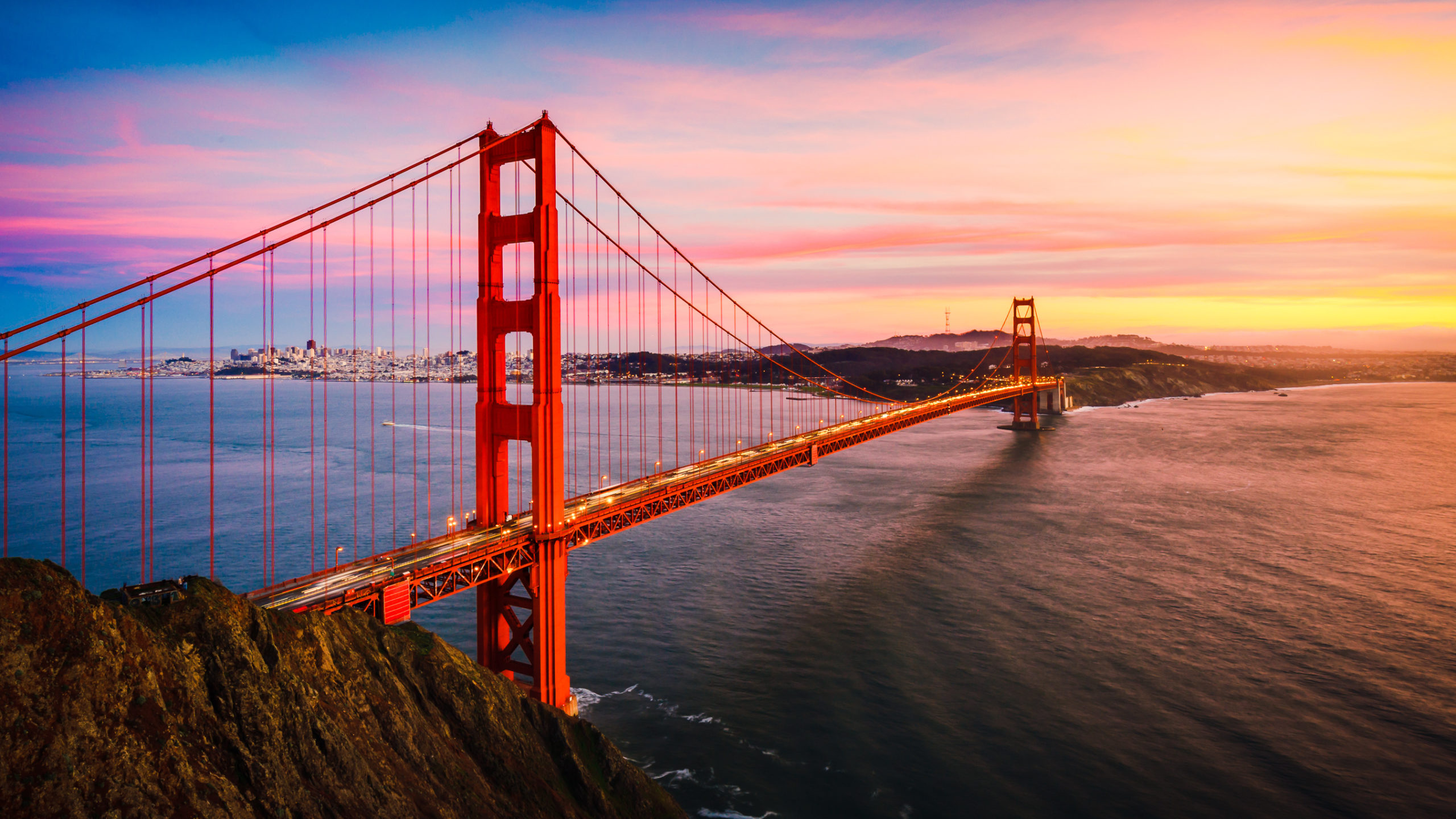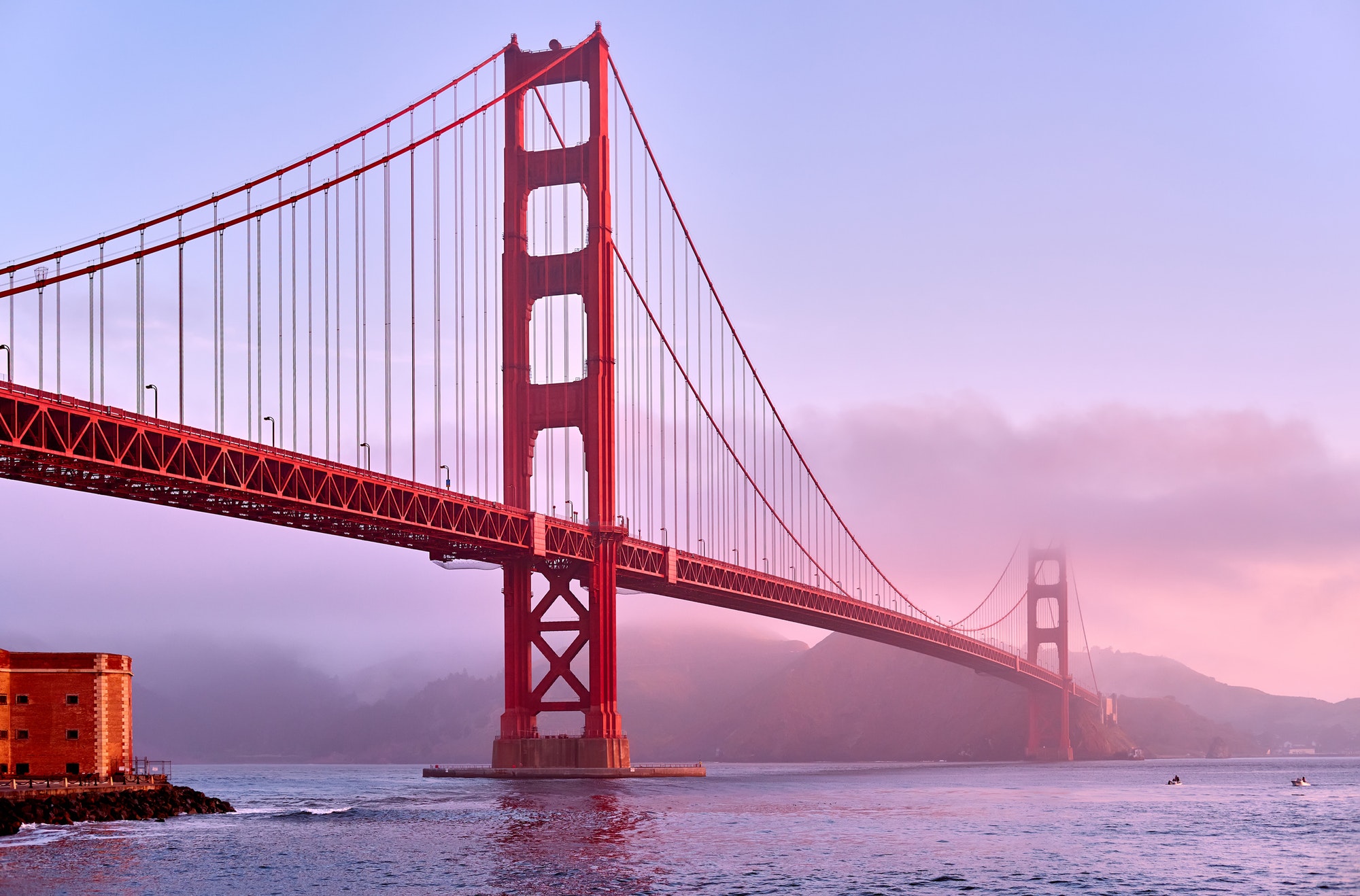
The Golden Gate: An Enduring Symphony in Steel, Fog, and Human Ingenuity
Perched majestically at the confluence of the Pacific Ocean and San Francisco Bay, the Golden Gate Bridge is more than just a colossal feat of engineering; it is a vibrant, enduring symbol. Its iconic International Orange hue, often peeking through the city’s characteristic fog, has graced countless postcards, films, and dreams, cementing its place as one of the world’s most recognizable and beloved landmarks. But beneath its photogenic exterior lies a story of audacious vision, relentless struggle, profound human sacrifice, and a constant, vigilant effort to maintain a structure that defies the elements and continues to inspire awe.
For centuries, the treacherous, mile-wide strait separating San Francisco from Marin County, dubbed the "Golden Gate" by explorer John C. Frémont in 1846, was considered unbridgeable. Strong currents, deep waters, persistent fog, and fierce winds presented a formidable challenge that daunted even the most ambitious engineers. The idea of a bridge was often met with ridicule, deemed an "impossible dream" by critics and a "bridge to nowhere" by naysayers who doubted its necessity or feasibility.
The man who dared to dream the impossible was Joseph B. Strauss, a diminutive but indefatigable engineer with a colossal ego and an unwavering belief in his vision. Strauss, who had built hundreds of bridges, mostly smaller ones, presented his initial design in 1921. It was, by most accounts, aesthetically unappealing, a hybrid cantilever-suspension design that lacked the grace and grandeur of the structure we know today. However, his tenacity was unmatched. He spent over a decade lobbying, campaigning, and battling against formidable opposition from powerful ferry companies, environmentalists, and even the U.S. War Department, which feared the bridge could impede shipping or be vulnerable to attack.

The financial hurdles were equally daunting, particularly with the onset of the Great Depression. Yet, a coalition of six Northern California counties, driven by the promise of economic prosperity and easier access, formed the Golden Gate Bridge and Highway District in 1928. They ultimately secured funding by selling bonds, remarkably, to local residents who mortgaged their homes and businesses, demonstrating an extraordinary act of faith in a project that seemed destined for failure. "When the project was first conceived, people scoffed," noted historian Stephen Graham. "But the sheer will of Strauss and the people of California turned a fantasy into reality."
Construction finally began on January 5, 1933. What followed was an epic four-year battle against nature’s raw power. The Golden Gate Strait is notorious for its strong tides, which scour the channel to depths of up to 372 feet, making the placement of the bridge’s massive piers an unprecedented challenge. Divers, working in perilous conditions with limited visibility, had to contend with bone-chilling waters, powerful currents, and the constant threat of being crushed by the massive caissons. The south pier, in particular, required the construction of a cofferdam a quarter of a mile out to sea, a structure that itself was a marvel of temporary engineering, designed to keep water out of the foundation site.
The wind was another relentless adversary. Gusts frequently exceeded 60 miles per hour, making work at dizzying heights incredibly dangerous. The towers, soaring 746 feet above the water, were the tallest structures west of Chicago at the time. Erecting their steel frames, each piece weighing tons, required precision, courage, and a disregard for gravity.
Perhaps the most iconic aspect of the bridge’s construction, beyond its final form, was its revolutionary approach to worker safety. Joseph Strauss, despite his reputation for being autocratic, understood the inherent dangers. He insisted on a comprehensive safety program, including mandatory hard hats (a novelty at the time), glare-reducing goggles, and a daily regimen of hot meals to combat the cold. Most famously, he ordered the installation of a massive safety net, stretching 50 feet wide, suspended beneath the bridge deck. This net, costing $130,000, was initially ridiculed as an extravagance. However, it proved invaluable, saving the lives of 19 men who fell during construction. These individuals proudly formed the "Halfway to Hell Club." Tragically, despite these pioneering efforts, 11 men lost their lives during the bridge’s construction, ten in a single incident when a section of scaffolding collapsed through the safety net. Their sacrifice remains a somber reminder of the human cost of such grand endeavors.
As the steel skeleton took shape, another crucial decision was made, one that would define the bridge’s visual identity: its color. The U.S. Navy initially pushed for black and yellow stripes for maximum visibility. However, consulting architect Irving Morrow, whose contributions to the bridge’s Art Deco style are often overlooked, argued passionately for a different approach. He was captivated by the reddish-orange primer that was being used to protect the steel from corrosion. Morrow found that this specific shade, which he dubbed "International Orange," not only complemented the natural surroundings of the Marin Headlands and the San Francisco skyline but also offered excellent visibility in the notorious fog. "The Golden Gate Bridge is an orange symphony against a grey canvas," Morrow once wrote, emphasizing its unique ability to stand out without clashing with the environment. His aesthetic genius gave the bridge its distinctive, warm, and welcoming glow, distinguishing it from every other bridge in the world.
The Golden Gate Bridge officially opened on May 27, 1937. The celebration began with "Pedestrian Day" on May 27th, when 200,000 people walked, ran, and even roller-skated across the bridge, experiencing the breathtaking views for the first time. The following day, President Franklin D. Roosevelt, from Washington D.C., pressed a telegraph key to signal the official start of vehicular traffic. The Golden Gate Bridge, completed ahead of schedule and under budget at a cost of $35 million (equivalent to over $700 million today), was immediately hailed as an engineering marvel and a symbol of American resilience during a period of economic hardship. It was, for a time, both the longest and the tallest suspension bridge in the world, records it held for decades.
Since its inauguration, the bridge has become inextricably linked with San Francisco’s identity. It has starred in countless films, from "Vertigo" to "X-Men," and been featured in countless songs, books, and works of art. It attracts over 10 million visitors annually, who come to marvel at its scale, walk or bike its span, and capture its beauty through their camera lenses. The bridge is not just a tourist attraction; it is a vital transportation artery, carrying approximately 112,000 vehicles daily, connecting the vibrant city of San Francisco to the serene landscapes of Marin County and beyond.
Maintaining such a colossal structure is an ongoing, Herculean task. The bridge’s steel components are constantly exposed to the corrosive effects of salt spray, wind, and fog. A dedicated team of painters works year-round, continuously repainting sections of the bridge, a process that never truly ends. Structural engineers meticulously inspect every inch of the bridge, monitoring its integrity against the constant stress of traffic and the ever-present threat of seismic activity in earthquake-prone California. The bridge was designed to withstand significant earthquakes, incorporating innovative flexible joints and materials, a testament to the foresight of its original designers.

However, the bridge’s iconic status also casts a somber shadow. Tragically, the Golden Gate Bridge has gained a grim reputation as one of the world’s most frequent sites for suicide. This heartbreaking reality has spurred ongoing efforts to prevent these tragedies. For decades, debates raged over the feasibility and aesthetics of a suicide barrier. Finally, after years of advocacy and design, a steel net system is currently being installed beneath the bridge deck, a testament to a community’s commitment to protecting vulnerable individuals while preserving the bridge’s majestic beauty. This ongoing project, set for completion in 2023, aims to offer a measure of hope and prevention without altering the bridge’s iconic silhouette.
The Golden Gate Bridge stands as a testament to humanity’s capacity for innovation, perseverance, and artistic vision. It is a living, breathing monument that continues to evolve, adapting to new challenges while retaining its original grandeur. More than just steel and cables, it embodies the spirit of California: bold, innovative, and forever reaching for the horizon. It is a bridge that connects not just two landmasses, but also the past with the present, the impossible with the achieved, and the dreams of a few with the admiration of millions around the globe. As the sun sets, casting a fiery glow upon its orange towers and the fog rolls in, enveloping it in a mysterious embrace, the Golden Gate Bridge remains, an enduring symphony in steel, fog, and human ingenuity.


